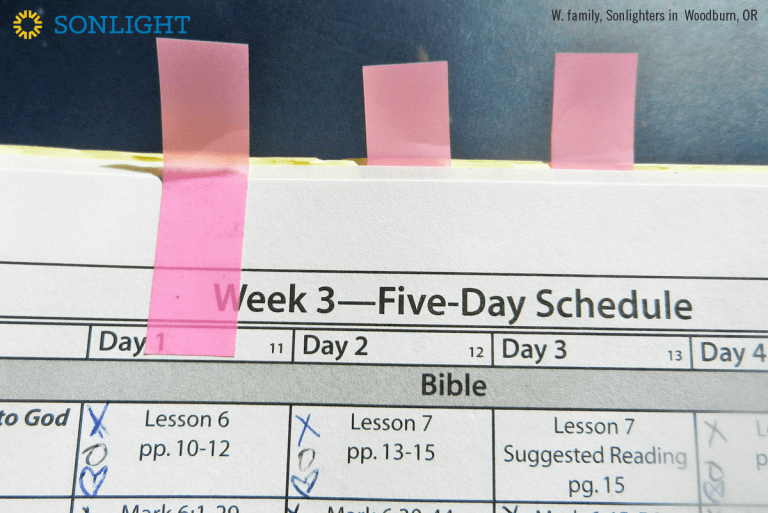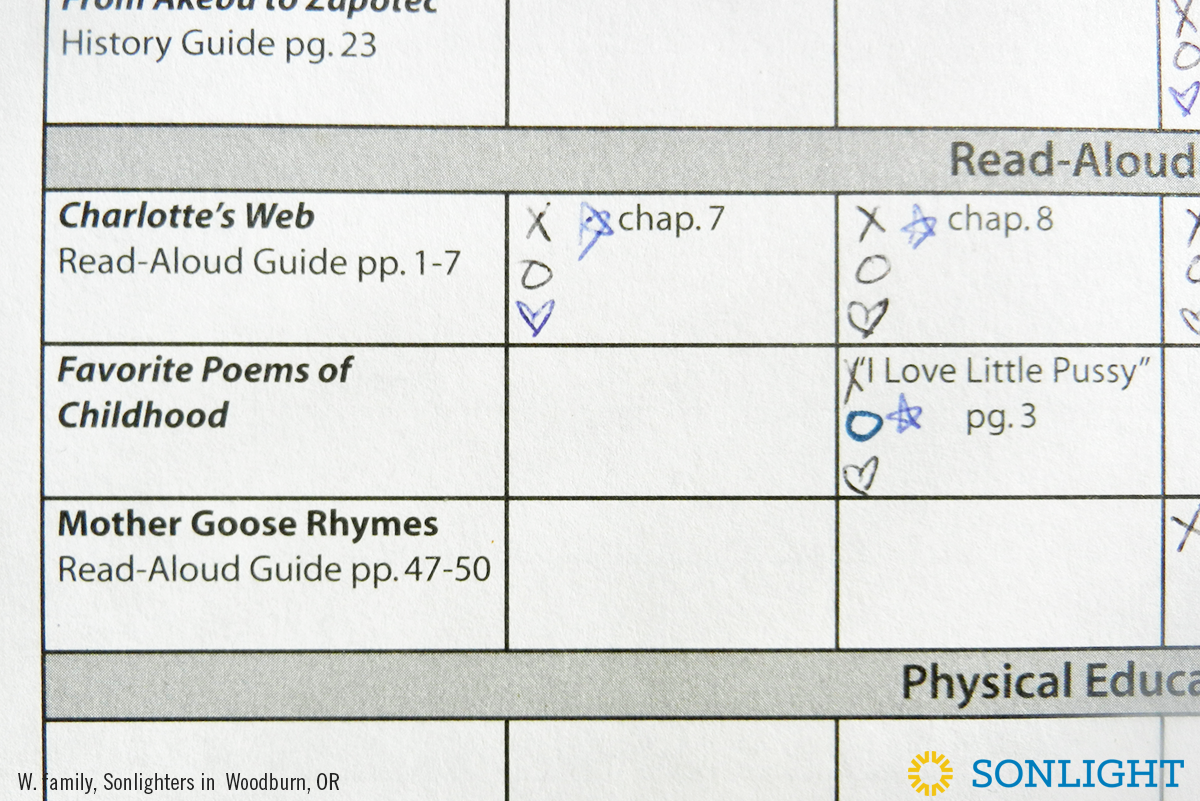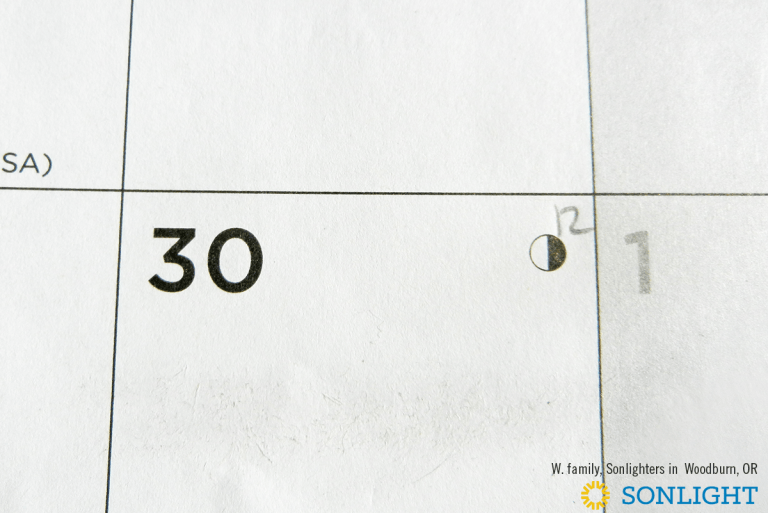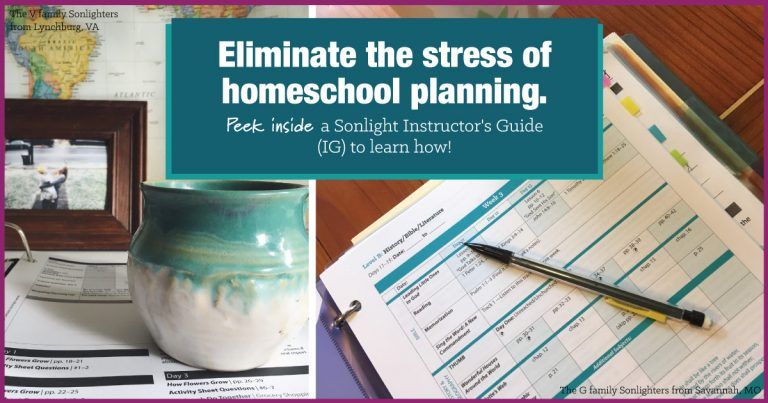There's a lot to keep track of as a homeschool parent! Your state, district, or umbrella school may require documentation. Even if it doesn't, you have your own day-to-day record keeping. You need to know what to do next and keep tabs on your own progress. When you multiply that record keeping for each child, keeping track of your homeschool can be a chore! Fortunately, when you homeschool with Sonlight, keeping track of your homeschool is easier thanks to the handy Instructor's Guide (IG). The IG lays everything out for you!

Since each family is different, consider layering additional methods on your IG like these tricks I've outlined below.
Keeping Track of Pages for the Day
When homeschooling with Sonlight, we keep track of two types of pages so we can easily start our day:
- pages in the books we’re reading
- pages in our Instructor’s Guide
It's open and go, but if we don't know where to open to, we aren't going anywhere!
Although bookmarks seem like an obvious choice for the Readers and Read-Alouds, they can easily fall out. When it comes to the bulky IGs, a regular bookmark is impractical, of course.
The solution? I’ve found that repositionable adhesive flags are perfect for both jobs.
When we finish an assigned reading, we simply move the flag to where we’ll pick up next. This method makes it easy to flip back and forth from one page to another in the IG. (See photo above.) In our IGs, we stagger flags over the subject area pages for the week we’re currently in:
- History / Bible / Literature (HBL) over Day 1
- LA over Day 2
- Science over Day 3
You can find adhesive flags in a variety of lengths, widths, and colors. Some even have arrows at the tips. These options can take your organization up a level if you want to color code according to student or subject.
Keeping Track of Multiple Kids
If you plan to use one Instructor’s Guide for multiple kids, you’ll need a way to keep track of what work each child has done. When our oldest started school, we would put an X in the corner of the appropriate box when he completed an assignment. When our second came along, I didn’t want each future kid to count X’s to decipher which assignments he needed to do. Skipping assignments would mess up the count, complicating things even more.
The solution is to give each child a symbol.
- Child 1 is an X.
- Child 2 is a circle.
- Child 3 is a heart.
- Child 4 is a star.

Each child is able to quickly glance at the IG and know which assignment they have to do next. It’s the first one without their unique symbol in the box.
Maybe you have (or hope to have) too many kids for symbols to be practical. If so, try using dots in different colors that correspond with age. You could also assign numbers that are based on age or, if birth order doesn’t sync with the order your kids go through a particular IG, the order they use that IG.
Keeping Track of Time, Week by Week
Many homeschoolers have a relaxed approach about when things get done and don’t worry about staying on a particular timeline. Others like a lot of structure, making sure that each day’s and week’s assignments are done in order and on time. If you fall into either of those categories, and it’s working well for your family, keep at it. If, however, you fall somewhere in the middle, you’ll need figure out how to pace yourself so you don’t end up too far ahead or behind.

In our home, we figure out when we want our school year to end, and then go back a couple weeks to build in some wiggle room. If we end up needing those two weeks, we’re grateful to have them so we can still end our year on time. If we’re able to complete everything before those two weeks, then we’re rewarded with a longer break. It’s not important to us if a day’s work gets done in a day, as long as a week’s work gets done in a week. Once we’ve determined our starting and ending points, as well as planned out breaks, we figure out which week of school needs to be completed by the last Friday of each month and write that week's number on the corresponding calendar square. (For example, in the photo above, I've marked that week in the IG as week 12 in my plan.)
This approach provides enough structure that we all finish the year when we want to, but still allows freedom for each child to pace the daily work as desired.
Whatever you need to keep better track of—pages, kids, time—keep experimenting until you find what works for your family.
Simplify your homeschool and streamline record keeping. Try three weeks of any Sonlight Instructor's Guide for free. Click here to get one for any level, preschool through twelfth grade.








